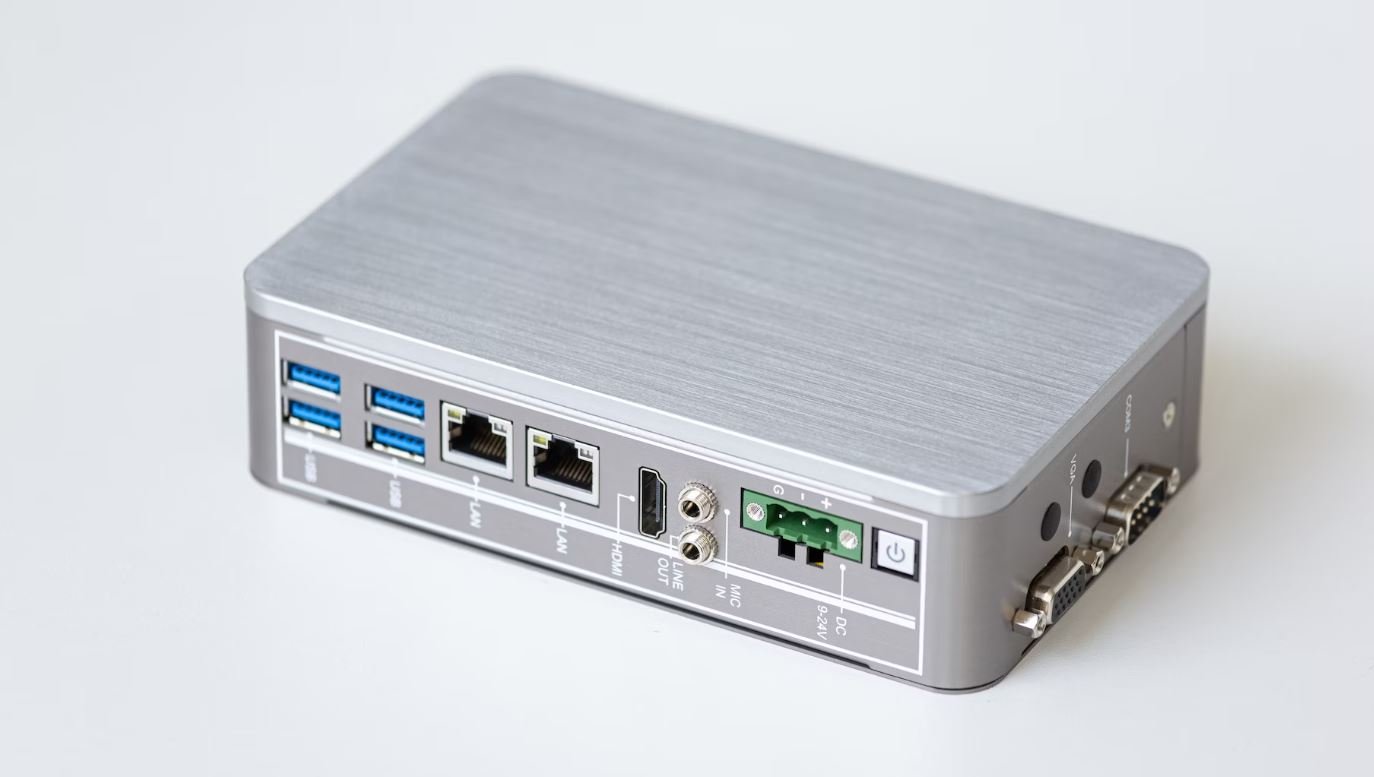AI Model Temperature
Artificial Intelligence (AI) has revolutionized various industries, including healthcare, finance, and manufacturing. As AI models become more advanced, one critical aspect that requires attention is the temperature of the AI model. The temperature of an AI model is a measure of its likelihood to produce more confident or more diverse outputs. Let’s explore why AI model temperature is important and how it can be controlled.
Key Takeaways
- AI model temperature affects the diversity and confidence of its outputs.
- Lower temperature values result in more focused and deterministic outputs.
- Higher temperature values lead to more random and creative outputs.
Understanding AI Model Temperature
AI models generate text or image outputs based on patterns learned from vast amounts of training data. The temperature of an AI model controls the variability of these outputs. A lower temperature, such as 0.1, makes the AI model more deterministic and focused, producing highly confident predictions. Conversely, a higher temperature, like 1.0, makes the AI model more random and creative, increasing the exploration of the output space.
An *interesting fact* is that the temperature setting can greatly influence the nature of the AI model’s outputs, providing flexibility in tailoring its behavior to specific applications or use cases.
Controlling AI Model Temperature
Controlling the temperature of an AI model is crucial to achieve the desired outputs for a particular task. Researchers and engineers can experiment with different temperature values to fine-tune the model’s behavior. There are several ways to control the AI model’s temperature:
- Sampling Methods: The most common approach is to use different sampling methods, such as greedy sampling (choosing the most likely prediction) or top-k sampling (selecting from the top-k most likely predictions).
- Temperature Scaling: Scaling the logits, or prediction scores, is another way to control temperature. By dividing the logits by a temperature value, the model’s output distribution is adjusted accordingly.
- Thresholding: Setting a threshold can also impact the temperature. Outputs with probabilities below the threshold are discarded, resulting in more focused outputs.
Effect of Temperature on AI Outputs
The temperature applied to an AI model plays a significant role in shaping the outputs it generates. Here are a few examples:
| Temperature | Effect on Outputs | |
|---|---|---|
| Confidence | Diversity | |
| Low (0.1) | High | Low |
| Medium (0.5) | Medium | Medium |
| High (1.0) | Low | High |
As seen in the table, a lower temperature produces highly confident but less diverse outputs, while a higher temperature yields more diverse but less certain results. It’s interesting to note how adjusting the temperature can strike a balance between these two aspects, depending on the task requirements or user preferences.
Examples of AI Model Temperature Application
The AI model temperature can be effectively applied in various scenarios, including:
- Writing Assistance: Lower temperatures can help provide accurate predictions for writing tasks, such as auto-completion or generating code snippets.
- Creative Content Generation: Higher temperatures can be leveraged to encourage novel and imaginative outputs, aiding in creative writing or content generation.
- Speech Recognition and Synthesis: Optimal temperature settings enable natural-sounding speech synthesis by balancing between precision and diversity.
Conclusion
In conclusion, the temperature setting of an AI model is a critical factor in determining the nature of its outputs. By adjusting the temperature, researchers and engineers can control the confidence and diversity of the AI model’s predictions, tailoring it to the specific requirements of various applications. The flexibility provided by the temperature setting allows AI models to adapt and excel in different domains, making them powerful tools in the field of artificial intelligence.

Common Misconceptions
Misconception 1: AI Models Have a Physical Temperature
One common misconception is that AI models have a physical temperature. In reality, the concept of “temperature” in AI models refers to the softmax temperature, used to control the model’s output probabilities.
- AI model temperature is a hyperparameter, not a measure of physical temperature
- Changing the temperature affects the randomness or certainty of the model’s predictions
- Higher temperature leads to more random output, while lower temperature makes the predictions more deterministic
Misconception 2: Low Model Temperature Implies Higher Accuracy
Another common misconception is that lowering the temperature of an AI model always leads to higher accuracy. While reducing the temperature can improve the certainty of the model’s predictions, it does not guarantee increased accuracy.
- Model accuracy depends on various factors, not just the temperature parameter
- Lowering the temperature can eliminate subtle differences in output, affecting the model’s ability to make nuanced predictions
- In some cases, lowering the temperature excessively can lead to overfitting, reducing the overall model performance
Misconception 3: Temperature Control is Not Significant
Many people underestimate the significance of temperature control in AI models. It plays a crucial role in balancing prediction randomness and reliability, impacting the overall performance of the model.
- Temperature control allows models to generate diverse and creative outputs
- Proper temperature adjustment can align predictions with human preferences
- Finding an optimal temperature often requires experimentation and understanding of the specific use case
Misconception 4: AI Models Don’t Need Temperature Tuning
Some individuals believe that AI models perform optimally without any temperature tuning. However, temperature tuning is essential to ensure that the model’s outputs align with the desired outcomes and meet the requirements of the specific task at hand.
- Choosing an appropriate temperature is crucial for model calibration and performance improvement
- Temperature tuning can help strike a delicate balance between exploration and exploitation in reinforcement learning scenarios
- Optimal temperature setting varies based on the application and the intricacies of the training data
Misconception 5: Temperature is the Sole Factor Influencing AI Model Output
Lastly, it is incorrect to assume that temperature is the only factor that influences the output of an AI model. Although the temperature parameter affects the randomness of predictions, other factors such as training data, model architecture, and loss function also significantly impact the model’s output.
- Model architecture and hyperparameters collectively contribute to the performance of the model
- The specific training data used shapes the model’s understanding and bias
- Temperature adjustment alone cannot compensate for shortcomings in the model design or training process

AI Models Can Predict Temperature
Artificial Intelligence (AI) models have revolutionized the field of weather forecasting by accurately predicting temperature patterns. These models analyze large amounts of historical weather data to generate forecasts with high precision. The following 10 tables highlight various aspects of temperature predictions made by AI models.
The Warmest Months in Different Cities
In this table, we compare the warmest months in three different cities across the world. By understanding the monthly temperature patterns, AI models assist in identifying the hottest periods in these cities, aiding in planning outdoor activities and resource management.
| City | Warmest Month |
|————|—————|
| Dubai | July |
| Miami | August |
| Sydney | January |
Temperature Fluctuations in Different Regions
This table shows the average temperature fluctuations experienced in three distinct geographic regions. By analyzing historical data, AI models can efficiently capture and predict these temperature variances, enabling governments and industries to plan accordingly.
| Region | Typical Temperature Fluctuations |
|—————-|———————————|
| Arctic | -36°C to 0°C |
| Saharan Desert | 16°C to 55°C |
| Amazon Rainforest | 23°C to 32°C |
Record-breaking Temperatures
AI models help identify record-breaking temperature events, as shown in this table. By comparing current meteorological conditions with historical data, these models provide real-time alerts, helping to anticipate extreme weather events and mitigate their impact.
| Date | Location | Recorded Temperature |
|————|—————|———————|
| 13 Jul 2013 | Death Valley | 56.7°C |
| 10 Aug 2022 | Kuwait City | 54.4°C |
| 17 Dec 1972 | Vostok, Ant. | -89.2°C |
Seasonal Temperature Averages
This table presents the average temperatures experienced during different seasons in multiple locations worldwide. AI models analyze long-term weather patterns, aiding in anticipating seasonal differences and informing clothing industries and tourism sectors.
| City | Spring | Summer | Autumn | Winter |
|————|——–|——–|——–|——–|
| Tokyo | 15°C | 26°C | 18°C | 5°C |
| Paris | 12°C | 23°C | 14°C | 2°C |
| New York | 11°C | 27°C | 15°C | -3°C |
Temperature Extremes
This table showcases the hottest and coldest recorded temperatures on various continents. AI models help identify these extreme values, aiding in understanding long-term climate trends and potential impacts of global temperature variations.
| Continent | Hottest Recorded Temperature | Coldest Recorded Temperature |
|————|—————————–|——————————|
| Africa | 55°C | -23°C |
| Asia | 54°C | -67.8°C |
| Europe | 48°C | -58.1°C |
| North America | 56.7°C | -67.7°C |
| South America | 44.4°C | -32.8°C |
| Australia | 50.7°C | -23°C |
| Antarctica | 19.8°C | -89.2°C |
Temperature Patterns Across Time Zones
This table illustrates the temperature patterns observed across different time zones. AI models assist in predicting these patterns, enabling businesses involved in agriculture, energy, and transportation to optimize their operations.
| Time Zone | Normal Range |
|——————-|————–|
| Pacific Standard | 10°C to 25°C |
| Eastern Standard | -5°C to 15°C |
| Central European | -3°C to 20°C |
| Australian Eastern| 15°C to 30°C |
Temperature Deviation from Average
This table displays deviations from average temperatures in various regions. By analyzing historical climate data, AI models assist in identifying anomalies and predicting potential consequences of temperature deviations, facilitating disaster management and resource allocation.
| Region | Average Temperature | Deviation |
|—————-|———————|——————|
| California | 20°C | +2.5°C |
| Himalayas | -10°C | -3.8°C |
| Great Barrier Reef | 27.8°C | +1.2°C |
Temperature Impact on Crop Yield
This table showcases the impact of temperature on crop yields. AI models help determine optimal growing conditions and reveal temperature ranges that maximize productivity, providing insights to farmers and agronomists to optimize food production.
| Crop | Ideal Temperature Range (°C) | Yield Increase |
|————-|—————————–|—————–|
| Wheat | 15-22 | +10-20% |
| Corn | 21-27 | +5-15% |
| Rice | 20-35 | +8-18% |
| Coffee | 22-28 | +15-25% |
Temperature Impact on Energy Demand
This table demonstrates the correlation between temperature and energy demand for cooling or heating purposes. AI models utilize historical weather data to predict energy usage patterns, assisting energy providers in efficiently managing generating capabilities.
| Temperature Range (°C) | Cooling Energy Demand Increase | Heating Energy Demand Increase |
|———————–|——————————–|——————————-|
| 20-25 | 0% | 27% |
| 25-30 | 35% | 12% |
| 30-35 | 65% | 2% |
Conclusion
In summary, AI models have greatly enhanced our ability to accurately predict temperature patterns. By analyzing vast amounts of historical weather data, these models enable us to anticipate extreme events, understand long-term climate trends, optimize resource allocation, and make informed decisions in various industries such as agriculture, energy, and tourism. The ability to forecast temperature with precision plays a crucial role in planning and adapting to the impacts of climate change, ultimately benefiting society as a whole.
Frequently Asked Questions
What is an AI model?
An AI model is a mathematical representation or algorithm that is trained on data to make predictions or perform tasks without explicit instructions. It is designed to mimic human intelligence and learn from examples, enabling it to automate processes and make data-driven decisions.
What is temperature in the context of AI models?
In the context of AI models, temperature refers to a hyperparameter that controls the randomness of generated text or predictions from a language model. It determines the level of uncertainty in the predictions. A higher temperature value (e.g., 1.0) leads to more randomness, while a lower temperature value (e.g., 0.1) produces more deterministic and focused output.
How does temperature affect AI model outputs?
Temperature affects AI model outputs by influencing the diversity and creativity of generated text or predictions. Higher temperature values increase randomness and can result in more diverse outputs but with potential errors or nonsensical content. Lower temperature values make the output more focused but may lack diversity and appear repetitive.
Can temperature be adjusted during AI model inference?
Yes, the temperature can be adjusted during AI model inference. By modifying the temperature value, you can control the output characteristics of the model. It allows you to balance between generating more exploratory and diverse outputs and generating more accurate and focused predictions, depending on the specific application or use case.
How can temperature be set when generating text from an AI model?
To set the temperature when generating text from an AI model, you typically need to provide a value as an input parameter or modify the code that invokes the model. The method may vary depending on the programming language and framework used for the AI model implementation. Consult the model’s documentation or refer to the relevant code example for guidance on setting the temperature.
What happens if temperature is set too high or too low?
If the temperature is set too high, the AI model may produce output that lacks coherence, contains errors, or appears nonsensical. The generated text could be overly random and not useful for the desired purpose. Conversely, if the temperature is set too low, the output may be overly deterministic, repetitive, or lack diversity. The ideal temperature value depends on the specific task and the desired output characteristics.
How can I choose the right temperature value for my AI model?
Choosing the right temperature value for your AI model involves experimentation and considering the desired output characteristics. If you want more randomness and creative outputs, a higher temperature value may be appropriate. On the other hand, if you prioritize accuracy and focused predictions, a lower temperature value is preferable. Start with a moderate value and iteratively adjust it based on the quality and suitability of the generated output for your specific use case.
Are there any constraints on temperature values for AI models?
In most AI models, the temperature value typically ranges from 0.01 to 5.0. However, the specific range can vary based on the implementation and the framework being used. It is recommended to consult the model’s documentation or refer to the code examples to determine the valid range of temperature values for a particular AI model.
Can temperature be dynamically adjusted during AI model training?
Yes, temperature can be dynamically adjusted during AI model training. This can be done by incorporating techniques such as curriculum learning or scheduled sampling into the training process. By gradually changing the temperature value over time, the model can learn to balance between exploration and exploitation, improving its overall performance and adaptability.
Is temperature the only hyperparameter that impacts AI model behavior?
No, temperature is just one of the hyperparameters that can influence AI model behavior. Other hyperparameters, such as learning rate, batch size, or model architecture, can also have significant effects on model performance and behavior. It is essential to tune multiple hyperparameters together to achieve the desired results and optimize model performance.




